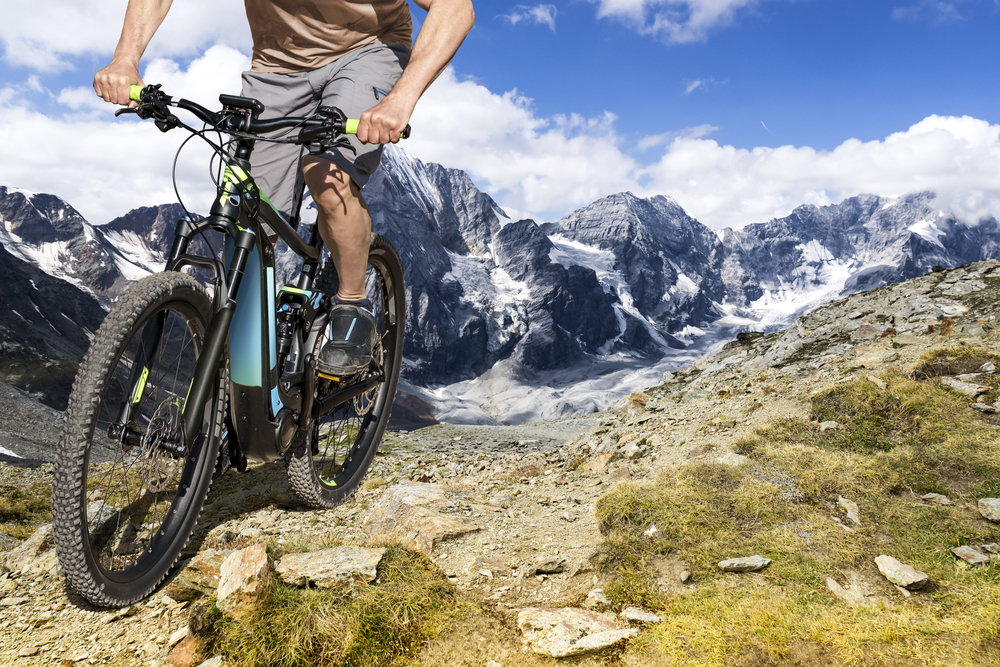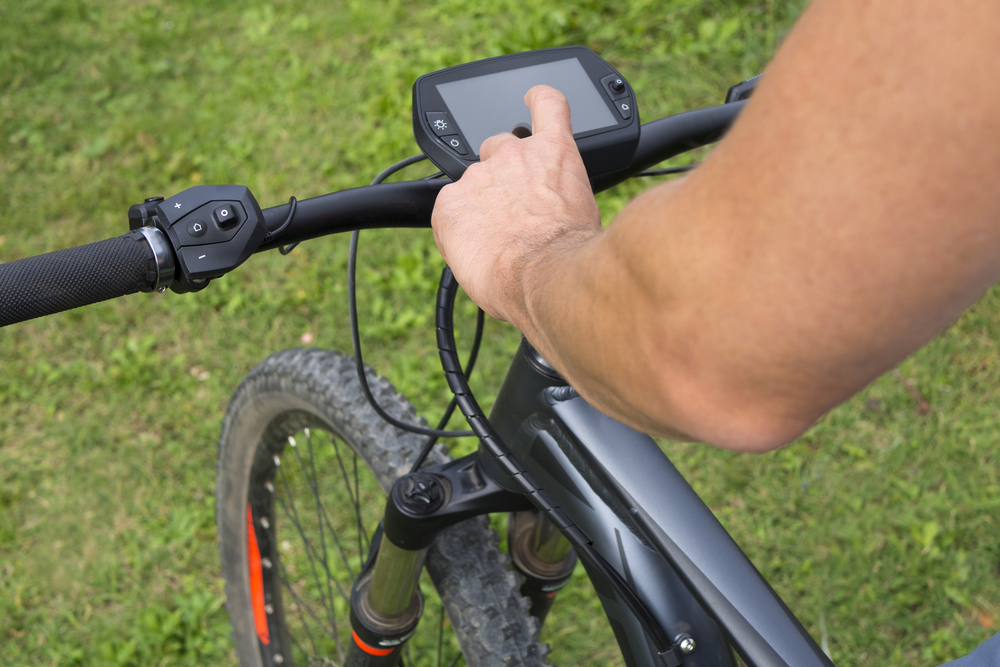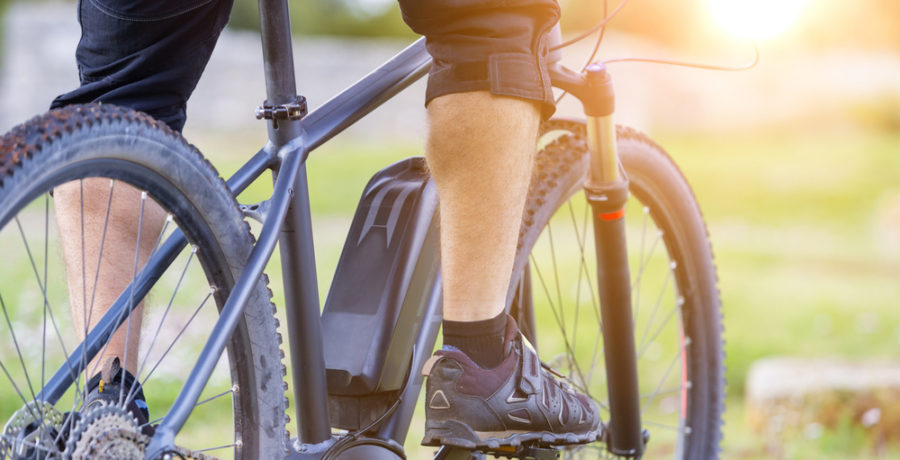Once looked down upon as a cheat’s version of a traditional pushbike, e-bikes have rapidly become a major trend in the global bicycle market. In recent years, e-bikes have begun to account for larger percentages of the bicycle market in industry hot spots all over the world from China, to Sweden and Germany. It’s predicted that the in the next seven to ten years the e-bike market will grow by 40%-50%, targeting consumers who didn’t previously consider cycling as a viable mode of transport due to concerns regarding practicality and efficiency.
When e-bikes were first released the majority were aimed at elderly or less abled riders… now, full suspension MTBs are designed with the purpose of getting thrill-seeking riders to the top of the hill with less effort so they can fit in more downhill runs
e-Bikes: Reaching the Consumer
The position of the bicycle retailer is going to play a huge part in the growth of the e-bike industry. In-store retailers are tipped to have the advantage with their ability to offer advice about the nuances of an e-bike to customers on an individual, personal basis.
Online retailers are being pressured to develop their services in order to be able to cater to the demands of those looking to invest in a first e-bike as well as veteran e-bike riders who want to get down to the bike’s nitty-gritty specifications.

Westbrook Cycles, an established online retailer and independent bike shop based in Stokesley, North-Yorkshire, are ahead of the curve when it comes to giving online consumers all the right information, offering an in-depth look at the inner workings of one of their top e-bike brands, Haibike. We asked Westbrook to share with us their thoughts on whether or not evolving e-bike technology was impacting the consumer demographic:
“When e-bikes were first released the majority were aimed at elderly or less abled riders as a means to participate in cycling. The bikes were designed more around a “Hybrid” style frame and geometry to make them comfortable and functional. Over the last couple of years however, we’ve noticed a shift in focus and now many manufacturers are bringing the benefits of the electric assist to more mainstream mountain bikes.”
“Instead of designing bikes merely to enable riders who couldn’t ride without the help from a motor, full suspension MTBs are being designed with the purpose of getting the more thrill seeking rider to the top of the hill with less effort so they can fit in more downhill runs than they usually would.”
e-Bikes: Global Development
Markets in the Netherlands, Germany and Denmark have already found success with e-bikes. It’s expected that by 2022 they will be part of the wider international market, forging in-roads into the US market in addition to countries in which cycling culture is already embedded, such as France, Spain and Italy. The introduction of e-city and e-trekking bikes will play a huge part in this global growth, with forward-thinking retailers already shipping frequently to European countries including Denmark and Sweden.
Here in the UK, bicycle manufacturers are looking to the future and are developing their practices and craftsmanship to include techniques specific to the the manufacturing of e-bikes, such as brazing (a process of joining two metals by heating and melting an alloy). With technology taking the place of traditional engineering, UK companies that are adopting processes for building e-bikes and creating industry specific jobs have the opportunity to contribute to Britain’s place in global manufacturing.

So, what is it about e-bikes that makes consumers want to leave their car parked on the drive? Well, three words: economics, efficiency and environment.
Economics
e-Bikes are a great way for to get around on a budget. Costing less than a car to purchase outright, to run and to maintain, they’re becoming a popular, cost-effective solution for commuters and for the environmentally conscious. e-Bikes are less expensive to operate per mile than travelling by car, with the average annual cost of maintaining and operating an e-bike working out at a fraction of the cost it would take to keep a petrol car on the road. Fuelling an e-bike is also much cheaper; an e-bike can run at a mere four pence per mile which, compared with the fluctuating prices of petrol in the UK, can result in huge savings for commuters.
the benefit with pedal assist is that commuters needn’t worry about arriving at work a sweaty mess; if you work in an office without showers and changing facilities, that can be a real concern.
Efficiency
Many commuters may be looking for a way to incorporate more activity into their routine, but find that a pushbike is inconvenient for their commute to work. The average speed of cars driving through a town is 18 mph, and even lower in busy city traffic. Most e-bikes average a speed of 15mph in the same environments, making them a viable time-saving option for those who want the fitness benefits of a bike without sacrificing speed. Even with pedal assist, e-bikes still offer commuters a fantastic workout and can help riders carry a lot of gear without increasing the strain of their journey. But, the benefit with pedal assist is that commuters needn’t worry about arriving at work a sweaty mess; if you work in an office without showers and changing facilities, that can be a real concern.
e-Bike technology is expanding and advancing at a rapid rate, and Westbrook offered their insight into how manufacturers are looking to develop further still, following the recent design shift to incorporate e-bike technology into mainstream bikes:
“With this evolution in design already ongoing, I would expect to see manufacturers continuing down this route, making refinements to the bikes handling and ride characteristics. There is also room for improvement with regards to reducing the bikes weight as the added battery and motor tends to make them significantly heavier than their purely human driven counterparts.”
Environmental Impact
e-bikes have a far smaller impact on the environment than a car – or public transport. They consume less electricity than electric cars and motorbikes, don’t emit fumes from an exhaust and can be made greener still if you ensure that your power is from a green supplier or generated from a wind turbine or solar panels. However, there are a few outstanding environmental concerns, including the use of unrecyclable materials in some batteries, although these concerns are minimal compared with those posed by the majority of other modes of transport.
The popularity of e-bikes shows no signs of stopping – in fact, it looks like a market which may grow exponentially over the coming years. e-Bikes may be the future of low-cost, energy-efficient transportation.

